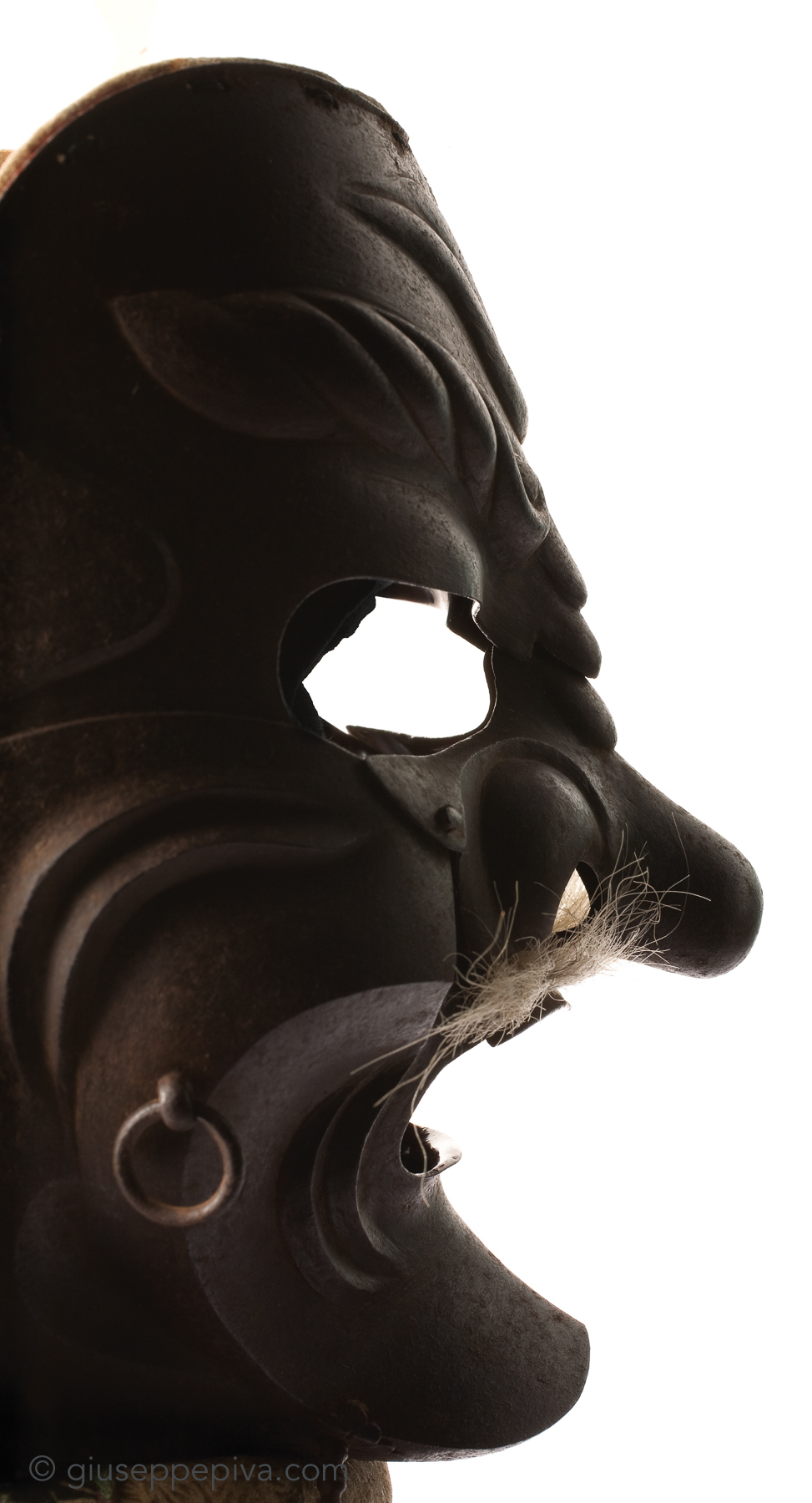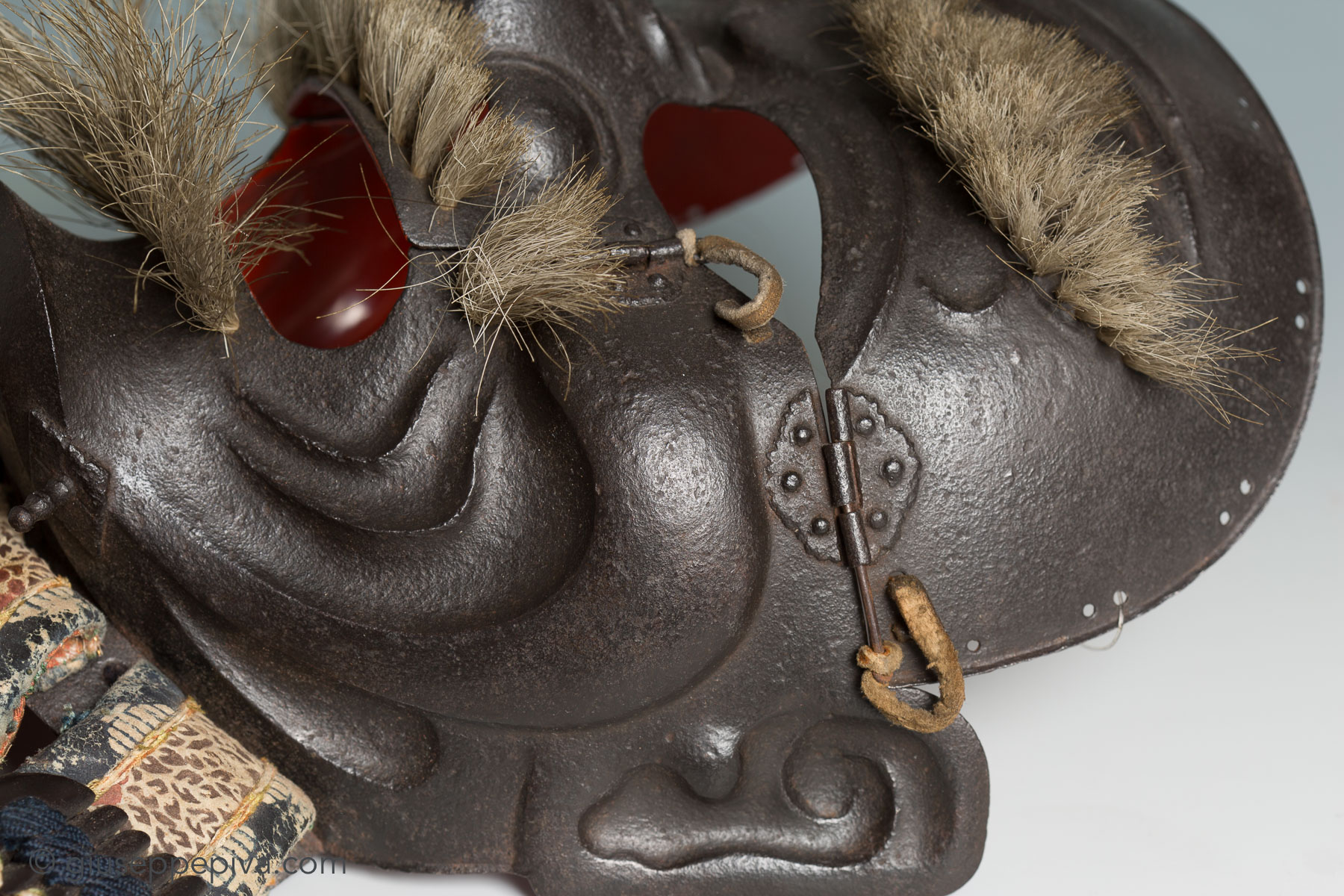Five facts about sōmen
26 September 2018

Five facts about sōmen
Sōmen are masks for the samurai armor which cover the entire face. Here you are some unknown facts about them:
 Most sōmen are modified half-face menpo. Due to the rarity of original sōmen, many antique me-no-shita-men (half-face masks) have been modified with the addition of the upper part. These can sometimes be spotted due to the lack of antique joints between the upper and lower part and often just looking to the red lacquer inside.
Most sōmen are modified half-face menpo. Due to the rarity of original sōmen, many antique me-no-shita-men (half-face masks) have been modified with the addition of the upper part. These can sometimes be spotted due to the lack of antique joints between the upper and lower part and often just looking to the red lacquer inside.- The term “sōmen” is modern. This term has been introduced during the 20th century and there are no older written documents which use this word for a samurai armor’s mask.
- Sōmen were also used during the “head inspection ceremony”. After a battle, it was custom for a samurai to inspect the dead enemies’ heads. A document from the Iwai school of armorers reads “[menpo] were also used to cover taken heads during the head inspection ceremony”.
- Most sōmen derive from Nō masks. Even if sometimes with substantial modifications, most full-face samurai masks are named after Nō characters, like Garuda, Tengu, Okina, etc., resembling the masks used for theatre plays.
- Construction can vary. A sōmen usually consists of three connected parts, but there are examples made with two and even those made from a single sheet of iron.
Title h1:
Five facts about masks for the samurai armor sōmen
Copyright © 2016 - giuseppe piva - VAT: 05104180962

